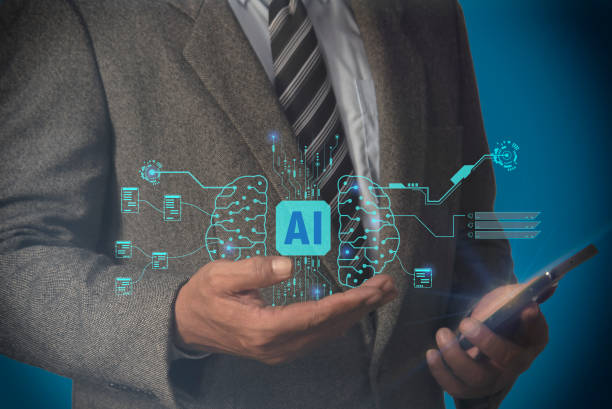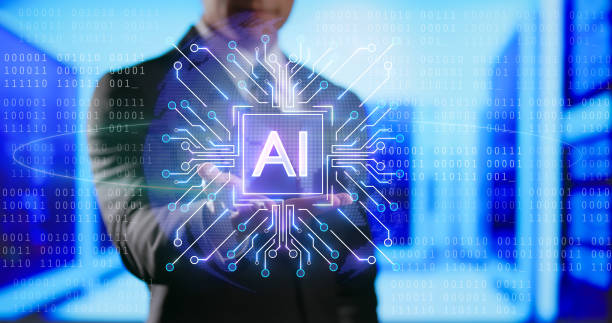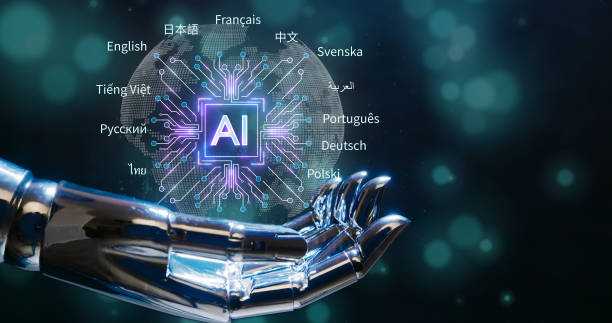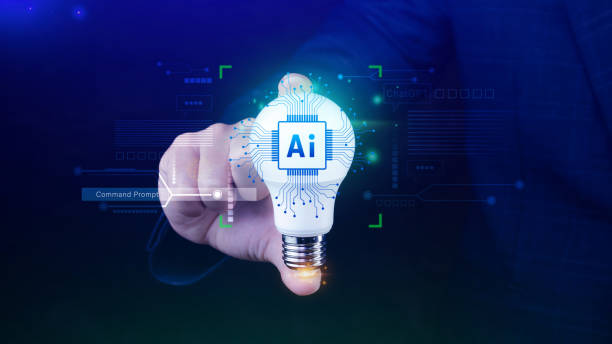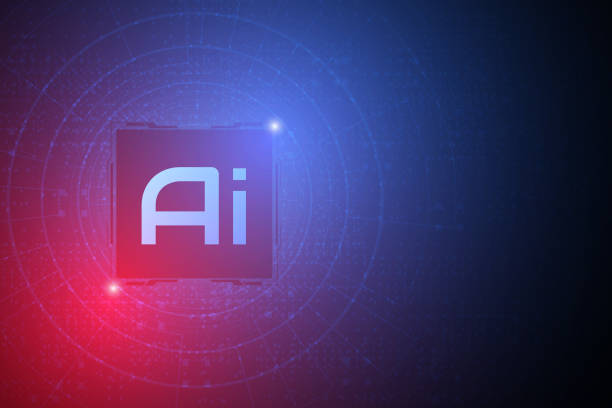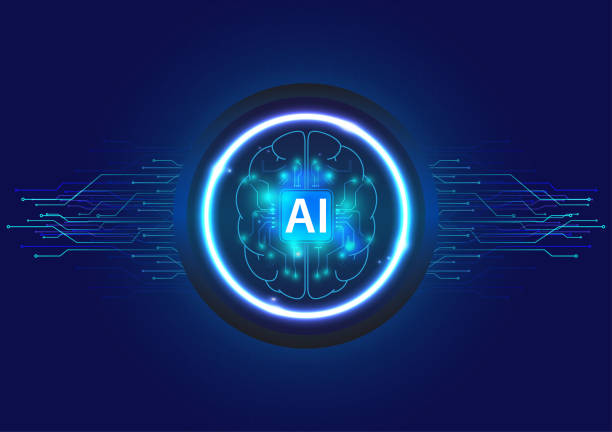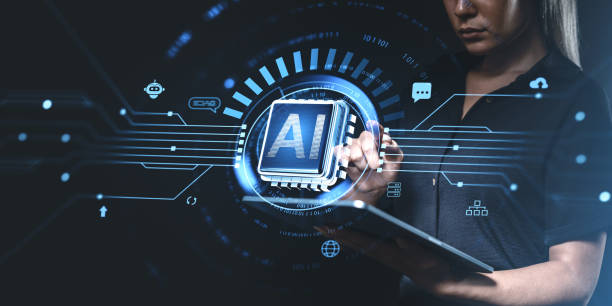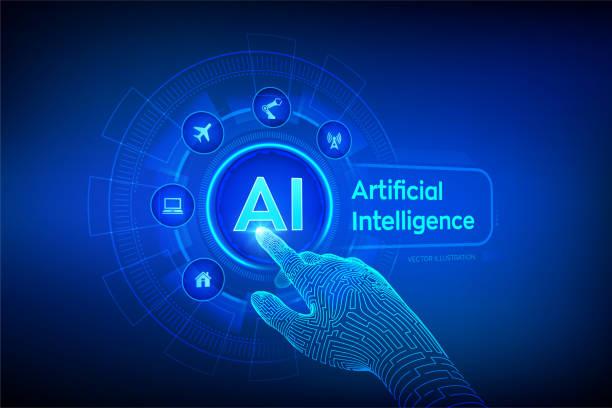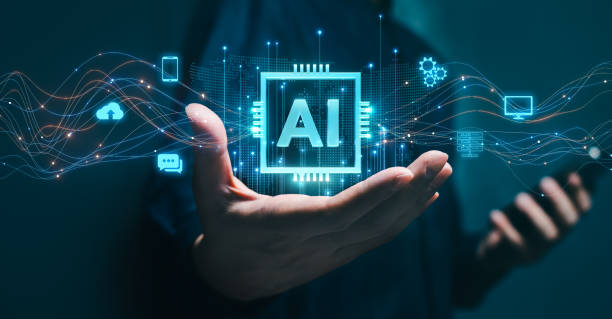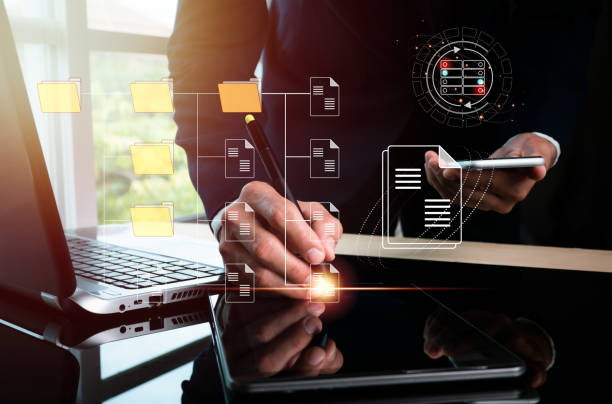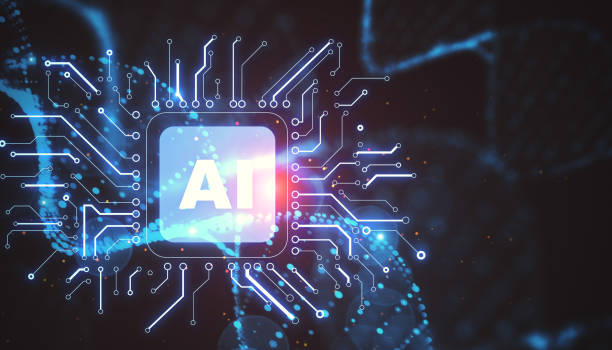Understanding Artificial Intelligence Robots: Definition, History, and Key Concepts
An Artificial Intelligence Robot is a combination of two important fields: #ArtificialIntelligence and #Robotics.
Simply put, an AI robot is a machine that, using artificial intelligence algorithms, is capable of performing tasks that typically require human intelligence.
These tasks can include learning, reasoning, problem-solving, understanding natural language, and even creativity.
AI robots use sensors and data collected from the environment to make decisions and react.
The history of AI robots dates back decades, but recent advances in machine learning and natural language processing have made these robots more powerful and efficient.
Today, AI robots are used in various industries, including manufacturing, healthcare, customer service, and even entertainment.
Key concepts in this field include deep learning, neural networks, natural language processing, and computer vision.
AI robots are rapidly evolving and are expected to play a much more important role in our lives in the future.
To better understand this technology, it is necessary to study credible and up-to-date resources.
Tired of your company’s website not meeting your expectations? With Rasaweb, design a professional website that showcases the true face of your business.
✅ Increase new customer acquisition and sales leads
✅ Increase your brand’s credibility and trust with your audience
⚡ Get a free website design consultation!
Types of Artificial Intelligence Robots: Examining Applications and Features
AI robots are divided into different categories based on their type of application and features.
One common classification is based on the type of tasks the robot is capable of performing.
For example, industrial robots are used to perform repetitive and precise tasks in production lines, while service robots are designed to provide services to customers or perform support tasks.
AI robots can exist physically (such as humanoid robots or drones) or in software form (such as chatbots or virtual assistants).
Each type of robot has its own unique features and advantages.
For example, chatbots can answer customer questions 24 hours a day, 7 days a week, while humanoid robots can operate in dangerous environments in place of humans.
AI robots are also used in the medical field for performing precise surgeries and in agriculture for monitoring crops.
Understanding the different types of AI robots and their applications helps us to leverage this technology in the best possible way.
Advantages and Disadvantages of Artificial Intelligence Robots: A Close Look at Opportunities and Challenges
AI robots have many advantages, including increased productivity, reduced errors, performing dangerous tasks, and providing better services.
However, the use of AI robots also comes with challenges and disadvantages.
One of the most important challenges is the issue of unemployment caused by the replacement of human labor with robots.
There are also concerns about data security and user privacy, as AI robots have access to large amounts of data.
Another disadvantage of AI robots is the high cost of designing, developing, and maintaining them.
In addition, AI robots may not perform well in unexpected or complex situations and require human supervision and intervention.
To benefit from the advantages of AI robots and reduce their disadvantages, it is necessary to develop appropriate policies and regulations in the field of using this technology and to pay special attention to the training and preparation of human resources to work with robots.
| Advantages | Disadvantages |
|---|---|
| Increased productivity | Unemployment due to the replacement of human labor |
| Reduced errors | Security and privacy concerns |
| Performing dangerous tasks | High cost of design and development |
| Providing better services | Poor performance in complex situations |
Applications of AI Robots in Various Industries: Examining Successful and Innovative Cases
AI robots have wide applications in various industries.
In the manufacturing industry, robots are used to perform repetitive and precise tasks such as welding, painting, and assembly.
In the healthcare industry, robots assist surgeons in performing complex surgeries and also play a role in providing care services to patients.
In the customer service industry, chatbots answer customer questions 24 hours a day and solve their problems.
Click here to preview your posts with PRO themes ››
In addition, AI robots are used in the logistics industry to optimize transportation routes and manage warehouses.
In the agricultural industry, robots use sensors and collected data to help farmers better manage crops and reduce water and fertilizer consumption.
Successful and innovative cases in this field include the use of AI robots in space exploration, self-driving cars, and intelligent security systems.
AI robots are constantly expanding and are expected to play a more important role in various industries in the future.
Are you disappointed with the low conversion rate of your online store?
Rasaweb, with its professional e-commerce website design, is your definitive solution!
✅ Increase your sales and revenue
✅ Unparalleled user experience for your customers
⚡ Get a free consultation now!
Key Technologies in AI Robots: Machine Learning, Natural Language Processing, and Computer Vision
AI robots are built on various key technologies, including #MachineLearning, #NaturalLanguageProcessing, and #ComputerVision.
Machine learning allows robots to identify patterns and make decisions using data.
Natural language processing helps robots understand and interact with human language.
Computer vision allows robots to analyze images and videos and extract useful information from them.
These three technologies work together to enable AI robots to perform complex tasks.
For example, an AI robot can use computer vision to identify different objects, use natural language processing to understand voice commands, and use machine learning to find the best solution for performing a task.
Recent advances in these technologies have made AI robots more powerful and efficient, and they are expected to play a much more important role in our lives in the future.
AI robots are constantly evolving, and to better understand them, it is necessary to study credible and up-to-date resources.
The Future of AI Robots: Predictions and Key Trends
The future of AI robots is very bright and full of potential.
It is predicted that in the future, AI robots will play a much more important role in our lives and will be widely used in various industries.
One of the key trends in this field is the development of autonomous robots that are capable of performing tasks without the need for human supervision.
It is also expected that AI robots, using stronger artificial intelligence, will be able to solve more complex problems and make better decisions.
Another important trend is the development of collaborative robots that work with humans in work environments and help them perform tasks.
These robots, using sensors and advanced algorithms, are able to understand their surrounding environment and can interact safely with humans.
AI robots will also play an important role in the fields of medicine, agriculture, and customer service.
Given the rapid advances in this field, it is necessary to develop appropriate policies and regulations in the field of using AI robots to make the best possible use of the benefits of this technology and prevent its disadvantages.
Ethical and Social Challenges of AI Robots: Concerns and Solutions
The use of AI robots is associated with numerous ethical and social challenges.
One of the most important concerns is the issue of accountability for the decisions and actions of robots.
If an AI robot makes a mistake or causes damage, who will be responsible? There are also concerns about discrimination and inequality resulting from the use of robots.
If robots are trained based on incorrect or incomplete data, they may make decisions that lead to discrimination against certain groups of people.
Another challenge is the issue of privacy and data security.
AI robots have access to large amounts of data, and it is necessary to ensure that this data is properly protected and not misused.
To address these challenges, it is necessary to develop ethical principles and specific standards in the field of designing, developing, and using AI robots.
It is also necessary to increase public education and awareness about this technology so that people can properly benefit from its advantages and avoid its disadvantages.
AI robots require special attention to ethical and social issues so that they can be used responsibly and sustainably.
| Ethical Challenges | Solutions |
|---|---|
| Accountability | Developing ethical principles and standards |
| Discrimination and inequality | Public education and awareness |
| Privacy and data security | Protecting data and preventing misuse |
Click here to preview your posts with PRO themes ››
How to Learn and Train AI Robots: Introducing Methods and Tools
Learning and training AI robots is a complex and multi-stage process that requires the use of various methods and tools.
One of the most common methods is the use of machine learning algorithms, which allow robots to identify patterns and make decisions using data.
Supervised learning, unsupervised learning, and reinforcement learning are among the most widely used methods in this field.
In addition, the use of Big Data and Supercomputers plays an important role in training AI robots.
Big data allows robots to identify more accurate patterns and improve their performance using large amounts of information.
Supercomputers also allow robots to quickly process complex algorithms and accelerate their learning.
Various tools such as TensorFlow, PyTorch, and Keras are used to develop and train AI robots.
AI robots need continuous learning and algorithm updates to improve their performance.
Did you know that a weak company website loses a lot of opportunities every day? Solve this problem forever with a professional company website designed by Rasaweb!
✅ Create a powerful and reliable image of your brand
✅ Targeted attraction of new customers and increased sales
⚡ [Get a free website design consultation]
The Impact of AI Robots on the Economy and Labor Market: Opportunities and Threats
AI robots have a significant impact on the economy and labor market.
On the one hand, the use of robots can lead to increased productivity, reduced costs, and the creation of new opportunities in various industries.
Robots are capable of performing repetitive and precise tasks and can work 24 hours a day, 7 days a week.
This can lead to increased production and improved quality of products and services.
On the other hand, the use of robots can lead to unemployment due to the replacement of human labor with robots.
This issue can be particularly problematic in traditional industries that rely heavily on human labor.
To address this challenge, it is necessary to develop appropriate policies and training programs in the field of teaching new skills to human resources so that people can work with robots and be employed in new industries.
In general, AI robots can create numerous opportunities and threats for the economy and labor market, and it is necessary to plan and manage properly to make the best possible use of their benefits and prevent their disadvantages.
Security Considerations in the Design and Use of AI Robots: Data Protection and Preventing Hacking
Security considerations are of high importance in the design and use of AI robots.
Robots have access to large amounts of data, and it is necessary to ensure that this data is properly protected and not misused.
One of the most important security considerations is protecting sensitive data and preventing unauthorized access to it.
This can be done using encryption methods, access control, and strong authentication.
It is also necessary to protect robots against cyberattacks and hacking.
Hackers may try to gain control of robot systems by infiltrating them and use them for malicious purposes.
To prevent this, it is necessary to use strong security software and regularly update robots.
AI robots should be designed in such a way that they can automatically respond and protect themselves in the event of cyberattacks.
Training employees in cybersecurity is also of high importance so that they can identify security threats and prevent them from occurring.
AI robots are constantly evolving, and security considerations also need to be constantly updated.
Click here to preview your posts with PRO themes ››
Frequently Asked Questions
| Row | Question | Answer |
|---|---|---|
| 1 | What is an AI robot? | An AI robot is a machine that is able to understand, reason, learn, and solve problems and can perform complex tasks with relative autonomy. |
| 2 | What are the most important applications of AI robots? | The main applications include industrial manufacturing, customer service (chatbots), medicine and surgery, self-driving transportation, space exploration, and military affairs. |
| 3 | What is the main difference between an AI robot and a regular robot? | A regular robot only follows pre-programmed instructions, while an AI robot can learn from data, make decisions, and adapt to new environments. |
| 4 | How do AI robots learn? | They identify patterns and improve their performance through machine learning algorithms (such as deep learning, reinforcement learning) and processing vast amounts of data. |
| 5 | Can AI robots have emotions? | Currently, AI robots do not have real emotions in the human sense. They can mimic or recognize emotions, but they do not understand or experience them. |
| 6 | What are the current limitations of AI robots? | Limitations include the need for large amounts of data, the inability to understand abstract concepts, the lack of real creativity, ethical issues, and the challenges of generalizability in new environments. |
| 7 | What is the role of artificial intelligence in the development of humanoid robots? | Artificial intelligence helps humanoid robots to walk, maintain their balance, understand their surroundings, interact with humans, and perform complex tasks. |
| 8 | How is the future of AI robots predicted? | AI robots are predicted to become smarter, more autonomous, and capable of performing more complex tasks in everyday life and industry, and their interaction with humans will increase. |
| 9 | Can AI robots replace all human jobs? | It is unlikely that all human jobs will be replaced. Robots take over many repetitive and dangerous tasks, but jobs that require creativity, empathy, and ethical judgment will remain. |
| 10 | What ethical and social challenges arise with the expansion of AI robots? | Challenges include issues related to privacy, data security, ethical decision-making by robots, the impact on employment, and accountability in the event of an error. |
And other services of Rasa Web Advertising Agency in the field of advertising
Intelligent UI/UX: A fast and efficient solution for online growth with a focus on SEO-driven content strategy.
Intelligent Direct Marketing: A fast and efficient solution for user engagement with a focus on SEO-driven content strategy.
Intelligent Customer Journey Map: Designed for businesses looking for online growth through an SEO-driven content strategy.
Intelligent SEO: A dedicated service for growing campaign management based on the use of real data.
Intelligent Advertising Campaign: A professional solution for analyzing customer behavior with a focus on intelligent data analysis.
And over a hundred other services in the field of internet advertising, advertising consulting, and organizational solutions
Internet Advertising | Advertising Strategy | Reportage Ad
Resources
Artificial Intelligence Robots, Definitions, Applications and Benefits – Virgool
,What is an AI Robot? Introduction, How it Works and Applications – Daneshjooyar
,The Future of Smart Robots and Artificial Intelligence in Our Lives | Virgool
,AI Robot – Sana AI
? Transform your business in the digital world with Rasaweb Afrin! From professional WordPress website design to powerful SEO and social media management, we are with you to shine at the top.
📍 Tehran, Mirdamad Street, next to the Central Bank, South Kazerun Alley, Ramin Alley No. 6

